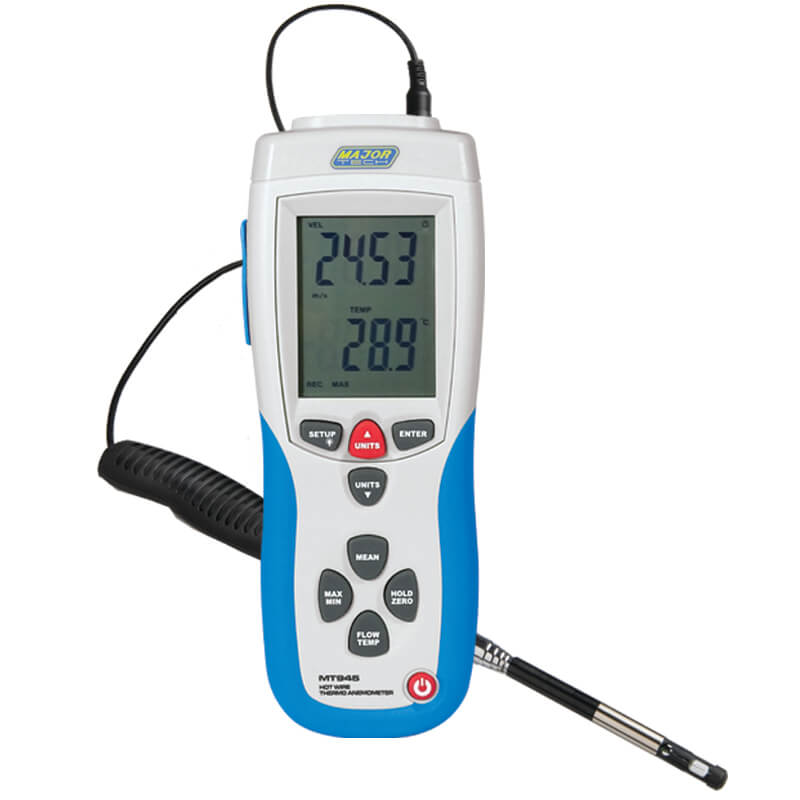Professional Tips for Calibrating Your Anemometer for Optimal Performance
Wiki Article
Discovering the Features and Advantages of Anemometers for Weather Lovers and Experts
Anemometers stand as critical devices in the world of weather condition tracking, dealing with both enthusiasts and skilled professionals alike. These devices provide a window right into the vibrant globe of wind patterns and speeds, offering vital data for meteorological evaluation and projecting. From mug anemometers to sonic anemometers, each type brings its distinct set of applications and benefits, clarifying various aspects of climatic conditions. As we delve into the functions and advantages of anemometers, a deeper understanding emerges not just of prevailing weather sensations however likewise of the broader implications for fields like wind power production and ecological research study.Value of Anemometers in Weather Condition Monitoring
Anemometers play an important duty in weather monitoring by supplying precise dimensions of wind rate, assisting in forecasting and understanding weather patterns. These instruments, ranging from traditional cup anemometers to contemporary ultrasonic anemometers, are crucial for meteorologists, researchers, and weather condition lovers alike.
Kinds of Anemometers and Their Applications
With the vital function anemometers play in weather condition monitoring and forecasting, comprehending the different kinds of these instruments and their applications comes to be important for experts and fanatics in the field. The most usual kinds of anemometers include mug anemometers, vane anemometers, hot-wire anemometers, and ultrasonic anemometers. Mug anemometers consist of 3 or four cups placed on straight arms that rotate with the wind, measuring its rate. Vane anemometers, on the other hand, make use of an easily rotating vane to align with the wind instructions, supplying both wind speed and instructions dimensions. Hot-wire anemometers operate based on the concept of convective warm transfer, where the cooling effect of the air circulation is determined to identify wind rate. Ultrasonic anemometers make use of ultrasonic audio waves to compute wind speed and instructions precisely.Each kind of anemometer has its distinct benefits and applications. Mug anemometers are appropriate and robust for basic weather tracking, while vane anemometers are favored for directional measurements. Hot-wire anemometers are sensitive to reduced air velocities, making them excellent for indoor settings. Ultrasonic anemometers are non-intrusive and offer high precision, frequently made use of in research and specialized weather condition surveillance applications. Comprehending the characteristics and applications of each kind of anemometer is critical for choosing one of the most appropriate instrument for certain climate checking needs.
Advantages of Using Anemometers in Forecasting
In meteorology, the utilization of anemometers offers vital benefits for boosting the precision of weather condition forecasting. Anemometers measure wind speed and instructions, giving crucial data for forecasting climate patterns. By including wind information into forecasting models, meteorologists can better recognize the view it now activity of weather condition systems, expect changes in climatic problems, and problem much more accurate forecasts.
Moreover, anemometers play an essential function in examining prospective weather hazards. Keeping track of wind speeds aids forecasters anticipate severe weather occasions such as typhoons, tornadoes, and winter months tornados with greater precision. This early caution system allows authorities to issue prompt informs and execute essential precaution, lowering the dangers to life and home.
Additionally, anemometers aid in enhancing eco-friendly energy manufacturing. By evaluating wind patterns, meteorologists can recognize suitable areas for wind farms and forecast energy outcome, adding to the efficient generation of wind power.

Anemometers in Wind Power Manufacturing
Provided the essential function anemometers play in providing accurate wind data for weather condition projecting and danger evaluation, their value reaches the realm of wind energy production. Anemometers are necessary tools in the area of wind energy, where the measurement of wind speed and direction is vital for determining the feasibility and effectiveness of wind turbine setups. By properly gauging wind rates at differing elevations, anemometers aid maximize the positioning and layout of wind generators to optimize energy outcome.In wind farms, anemometers are purposefully placed to collect real-time wind data that is used to assess the potential energy manufacturing of a website. This information is important in identifying the economic practicality of wind energy projects and in projecting power generation to make sure grid stability. Furthermore, anemometers aid in checking wind problems to enhance turbine efficiency, protect against damage from high winds, and guarantee the safety of employees operating in the area of wind turbines.
Enhancing Climate Recognizing With Anemometers

Anemometers play a crucial function in improving our understanding of microclimates. These localized weather condition conditions can vary considerably from broader local projections, making it important to have exact information for certain areas. anemometer. By tactically placing anemometers in various places, scientists can collect thorough info on exactly how wind behaves in various surfaces, metropolitan atmospheres, or bodies of water
Furthermore, anemometers add to boosting climate forecasting models by giving real-time information on wind habits. This details is specifically useful for anticipating extreme climate events, maximizing farming practices, and supporting industries like aeronautics and maritime navigating. In general, anemometers are invaluable tools that enable us to dive deeper right into the intricacies of weather condition systems, ultimately causing more exact predictions and better-informed choices.
Verdict
In final thought, anemometers play an important duty in weather tracking and projecting by gauging wind speed and direction. Anemometers likewise have applications in wind power manufacturing, further highlighting their relevance in both meteorology and eco-friendly energy industries.From mug anemometers to sonic anemometers, each kind brings its unique collection of applications and benefits, shedding light on different elements of climatic problems. These tools, ranging from traditional cup anemometers to contemporary ultrasonic anemometers, are reference crucial for meteorologists, scientists, and climate enthusiasts alike. The most common types of anemometers include cup anemometers, vane anemometers, hot-wire anemometers, and ultrasonic anemometers. Cup anemometers are appropriate and robust for general weather condition tracking, while vane anemometers are favored for directional measurements. Anemometers are important instruments in the field of wind energy, where the measurement of wind rate and instructions is critical for determining the feasibility and efficiency of wind generator setups.
Report this wiki page